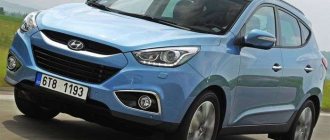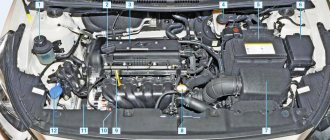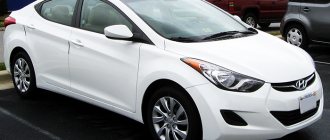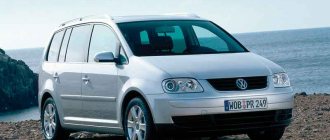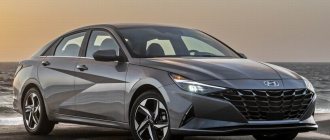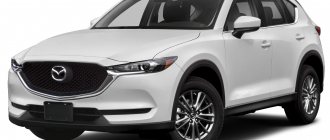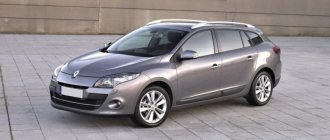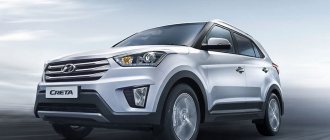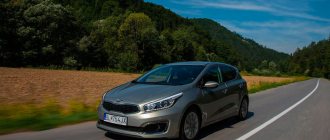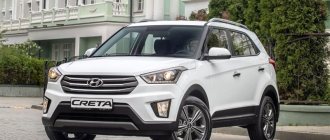Where is Hyundai Solaris assembled for Russia and other countries?
In today's article we will talk in more detail about the Hyundai Solaris model, as well as where and how it is assembled.
An interesting fact is that if the first generation of Solaris was assembled exclusively abroad, then the second generation is already produced in Russia.
World famous Hyundai factories
- It is not surprising that the most powerful plant is located in the South Korean city of Ulsan. Cars of this assembly are sent for sale mainly to the Asian and European markets.
- A plant in St. Petersburg that produces cars for the domestic market and CIS countries.
- The plant in Turkey, which began operating in 1998, is the second in capacity after the Korean one. It produces cars for sale on the European market and in the Middle East.
- There is another Russian Hyundai plant, which is located in Taganrog. But at the moment, the second generation Solaris is not built on it.
- We should not forget about factories in India, the USA, Brazil and, of course, China, but the cars produced there are not supplied to the Russian market.
Photo: Hyundai plant in Russia
It is worth noting that the Solaris model is annually included in the top five best cars in Russia, and the fact that it is assembled exclusively by domestic specialists is very pleasant.
However, as they say: “The first pancake is always lumpy.” The debut models assembled at the plant in St. Petersburg had a lot of shortcomings. First of all, these are problems with the transmission, which often failed. Also, the suspension was not very reliable. But through trial and error, the developers eliminated the problems, and soon serial production of Solaris successfully started at the plant.
I am pleased with the level of quality control at the plant, because there are always several Korean specialists here who constantly monitor the progress of production.
Is it worth buying a domestically assembled Hyundai Solaris?
The main reason is the high quality of domestically assembled Solaris models.
Such results can be achieved due to round-the-clock work, because the working day is divided into three shifts. Therefore, the conveyor practically does not stop.
As mentioned above, quality control is carried out exclusively by Korean specialists, who approve or send products for revision.
The St. Petersburg Hyundai plant is one of the largest branches of the Korean company. Hyundai Solaris cars, which are assembled on it, are among the highest quality and most popular models on the domestic market. Therefore, if you decide to purchase a Russian-made Solaris, you can be completely confident in good build quality.
Where is Hyundai Solaris assembled for our market?
Hyundai factories around the world
Cars are assembled in many countries and on different continents. For the Russian market, Hyundai Solaris is produced in:
More information about the production of Hyundai Solaris in Russia
Should I buy a Hyundai Solaris of our assembly?
autolynch.ru
Where Hyundai Solaris is assembled in Russia has not been a secret for a long time. Korean automakers, who managed to establish Russian production back in 2008, assemble the car at production facilities in St. Petersburg, which has become a new stage in the development of relations between the two countries, the Russian Federation and the Republic of Korea, at the automotive level.
Where is Hyundai Solaris assembled? It is the Russian plant that is located in Kamenka , and it should be noted that its products are sold not only in the Russian Federation, but also in neighboring countries.
Previous enterprises are located in the United States of America, the Czech Republic, Turkey, China and India. The plant in question is the first in Russia and therefore its products are widely popular.
Russian plant
Nowadays, automation is increasingly replacing manual labor, and this plant is no exception. The mass automation rate exceeds 80% . The correct localization of the Russian plant also brings its own advantage, mainly due to the fact that in Russia today there are eleven more Korean manufacturing plants that have the opportunity to supply the necessary assembly parts and components for Solaris.
loading…
The geography of production is expanding
Long gone are the days when certain brands of cars were produced in any one country.
Previously, Audi was produced only in Germany, Chevrolet - in the USA, Peugeot - in France, and so on.
But the geography of production is expanding, new factories are being built in other countries, needs and, as a consequence, sales volumes are growing.
This approach allows us to saturate the market and provide everyone with cars.
Below we will dwell in more detail on Korean Hyundai cars, which are produced in many countries around the world (including Russia).
Where is Hyundai Solaris assembled: description of the car
Car enthusiasts who are interested in the question of where the Hyundai Solaris is assembled will be interested to know that the country of origin of this popular car is Russia.
The Hyundai Motor Company plant is located near St. Petersburg, Russia. Another popular car is assembled here - the Kia Rio, which is almost identical to the Hyundai in technical terms. Only the interior design and exterior are considered distinctive features.
The Russian plant is constantly striving to develop, so this company recently offered about five options for different car models. Hyundai Solaris has become the fourth generation of Accent, popular among Russian car enthusiasts. The name of the third generation, known to Russians as “Verna”, was remembered and went down in history as an unsuccessful project. Nowadays such a car is almost impossible to find. The reason for the failure is errors in the miscalculation of marketers. The car turned out to be too expensive. Therefore, production of “Verna” has been discontinued in Russia.
HMMR is one of the largest automobile manufacturers in Russia, producing 200,000 vehicles per year. The plant is equipped with modern industrial automation equipment, including 185 robots, and has created about 7,000 jobs in the region. The St. Petersburg plant achieved 46% localization with the cooperation of local suppliers.
Model description
Hyundai Motor Corporation
The founding date of the concern was 1967, when the enterprise was successfully opened thanks to the efforts of Chung Ju-Yong. Until 2000, this was only a link in a large project. But later the situation completely changed and Hyundai Motor became a separate enterprise.
To successfully increase production volumes, the company needed additional capacity. Then the idea arose to open a plant in Russian St. Petersburg. For more than five years now, this enterprise has become the place where Hyundai Solaris is assembled.
Russian specialists working for Hyundai Motor are characterized by a responsible attitude to work and strict adherence to deadlines for delivery of the finished product. For the successful operation of the St. Petersburg plant, the Koreans invested more than half a billion dollars in this project.
Also, the factories where Hyundai Solaris (2013) is assembled are the following enterprises:
Process automation
Let's sum it up
The car is produced in Russia, where the Hyundai Solaris is assembled with a 1.4-liter, 1.6-liter engine producing 107 hp. With.
fb.ru
Many domestic car enthusiasts are very sensitive to the topic of Korean cars. And this is not surprising, because the products of Korean automobile companies have proven themselves well in the world, and in particular in the Russian market. Photo: Hyundai Santa Fe 2017
Among all the Korean models, Hyundai clearly stands out. Crossovers are considered the main asset of the developers of this concern. The most popular is the Hyundai Santa Fe. It is worth noting that even before the official debut, models wishing to purchase a car were lining up to submit applications.
The second generation of the crossover was again assembled in South Korea and in the USA. The American branch was opened immediately after the stunning success of the first modification of the Santa Fe.
Recently, company representatives admitted that Santa Fe began to be developed when the company began to face a crisis and urgently needed to improve matters. At a time when the world market was suffering from a shortage of high-quality crossovers, the new “Korean” immediately appealed to car enthusiasts and became a kind of “lifeline” for the company.
The latest at the moment, the third generation of the model is also in incredible demand. The car can be safely called “worldwide”, since manufacturers export it to all parts of the World.
In the next paragraph we will talk in more detail about the pros and cons of the Hyundai Santa Fe.
Photo: assembly process at a plant in South Korea
I am also very pleased with the dynamism of the crossover. Those buyers who decide to purchase a Santa Fe equipped with a turbodiesel engine can fully enjoy all the positive features of the car.
If you look at the Santa Fe crossover taking into account Russian road conditions, it is difficult to find a point in which you could blame the developers. The car is perfectly adapted for comfortable use by domestic car enthusiasts.
The main point that attracts buyers is the quality of the car. If this were not the case, the developers would not offer a five-year warranty.
Among the main disadvantages, two should be highlighted: firstly, the Hyundai Santa Fe crossover is very expensive, and is not affordable for residents of the Russian Federation with an average income. Secondly, the manual transmission often fails, but this is more relevant for an American-assembled model.
Conclusion
Of course, the cost of the new Santa Fe seems a little overpriced, but after a detailed review of the car, you can be convinced of its objectivity.
History of the creation of Hyundai santa fe - Hyundai santa fe, 2.7 l., 2003 on drive2
Hyundai Santa Fe
- Hyundai's first stand-alone SUV. After several successful years of selling the modernized but old Mitsubishi Pagero under its own name Hyundai Galloper, the Korean company decided to produce its own SUV, albeit a parquet one. Apparently, one of the best representatives of this class, the Lexus RX300, was taken as a sample.
Hyundai Santa Fe is completely designed in America and for America first. The production Santa Fe debuted in 2000 at the Detroit show, where a concept with the same name was shown the year before. However, in terms of design, Santa Fe is a typical Korean: an abundance of “blown” surfaces, height differences, edges and stampings. In general, in appearance it is a mixture of Hyundai Coupe and Isuzu VehiCross.
The Hyundai Santa Fe was at the heart of the company's restructuring program in the late 1990s because, despite receiving criticism from journalists for its lackluster appearance, the SUV was a success in America. The SUV was so popular that at times Hyundai had difficulty meeting demand. The Santa Fe quickly became Hyundai's best seller and contributed to Hyundai's success in the United States.
Change log
2001
In its first year of production, the Santa Fe was offered with two engines and matching transmissions. In North America, the fuel-efficient, if underpowered, 2.4 L four-cylinder engine became standard and could be had with either a 5-speed manual or 4-speed automatic transmission.
The 2656 CC (2.656 L) Delta V6 engine offered more power than the four-cylinder engine, but was only available with an automatic transmission. Front-wheel drive came as standard (with traction control optional for the V6 engine), all-wheel drive was optional.
A 2 liter Common-Rail Turbo Diesel (CRTD) engine was offered outside the United States. In Australia, the Santa Fe went on sale in November 2000 with only one trim level: a 2.7L engine. V6 mated to a four-speed semi-automatic transmission.
All-wheel drive was standard. Cheaper 2.4L four-cylinder engines arrived a few months later in 2001, but were only available with a manual transmission. Along with the similar Ford Escape and Mazda Tribute, the Santa Fe was also the first compact crossover with a V6 engine.
2002
The Santa Fe entered its second year without any changes. Demand for the Santa Fe continued to increase, but owners had some suggestions for changes for Hyundai.
Mid 2002
Hyundai has increased the fuel tank size from 64 to 71 liters and reorganized the badge placement on the tailgate. The internal layout of the console and the position of the clock have been changed.
2003
Hyundai has listened to complaints from car enthusiasts about the lack of lighting in the glove compartment, insufficient power and the use of conventional struts instead of gas struts for the hood. In 2003, a 3.5-liter V6 engine was introduced in addition to two other gasoline engines in North America. The larger engine came with a computer-controlled all-wheel drive system.
Automatic transmission control parts were chrome-plated, as opposed to the matte plastic silver style of the 2001 and 2002 models. The high-quality Monsoon sound system was standard on the mid-level GLS model and was paired with a 6-disc CD changer in the top-spec LX version.
The final changes for the 2003 model were punctuated by the highly unpopular Pine Green color, which was nicknamed “Yucky Green” in certain circles of car owners. 4-cylinder models in Australia ceased to be sold due to lack of demand for them, leaving the only model on sale with a 2.7L V6 engine and automatic transmission.
2004
Hyundai continues to post record vehicle sales. The manual climate controls in the base GL and mid-range GLS have been revised very slightly. The central locking chirped in confirmation when the LOCK button on the remote control was pressed twice.
Mid 2004
The AM/FM radio antenna was moved from the driver's side rear window glass to the roof and centered just above the rear door.
2005
The Santa Fe gets its latest redesign. Changes were made to the radiator grille, taillights, rear bumper, and instrument cluster interior. The instrument panel was revised and the speedometer now had a limit of 140 mph (previously it showed no more than 130 mph).
There was now a more convenient pocket for storing payment receipts in the driver's sun visor. Both visors also have the ability to better block sunlight coming from the sides. The base version remained unchanged, giving way to the Tucson model.
In Australia, all models received body-colored bumpers. The Sandstone color was no longer used in favor of a subtle coffee color called Mocha Frost. The GL's interior trim benefits from the 4-cylinder engine and matching 5-speed manual transmission.
A 2.7-liter V6 took over duties as the base engine. The passenger airbag could be turned off, preventing the airbag from deploying if no one was in the seat (or a child was there). 3-point seat belts have been added to the center of the rear seat.
2006
Two colors are no longer used. These are Merlot and Canyon Red. The rare Dark Emerald Green color was available mid-year. However, it did not appear in brochures, but was ordered exclusively by the dealer. The LX version was renamed "Limited" and received a corresponding badge on the tailgate for the first time for Santa Fe.
About Creta: Iskromet: test drive Hyundai Creta - KOLESA.ru - automobile magazine
Another innovation is the presence of monochromatic coloring, this was a move away from contrasting gray. The monochromatic option is only available in the black “Limited” version. These add-ons started at $1,900, bringing the total cost of the car to $30,000.
2007
In Korea, the model has been discontinued due to the release of a new generation of the model. Production of the first generation Santa Fe was transferred to the Taganrog Automobile Plant and is currently produced there under the name Santa Fe Classic.
PS: 2021
The Taganrog Automobile Plant began production of the new C190 crossover under its own Tagaz brand. In fact, this is a converted JAC Rein, which in turn is a Chinese copy of the Hyundai Santa Fe in the old body (Classic).
The Chinese have noticeably refreshed the appearance of the car. At the front there is now a less massive front bumper compared to the original and new optics in the style of the Land Cruiser Prado. The rear lights are made in the style of the Lexus RX300.
The Chinese have noticeably refreshed the appearance of the car. At the front there is now a less massive front bumper compared to the original and new optics in the style of the Land Cruiser Prado. The rear lights are made in the style of the Lexus RX300. Only one modification of the TagAZ C190 is offered on the Russian market, equipped with a 2.4-liter gasoline, 4-cylinder power unit paired with a 5-speed manual transmission.
Where is Hyundai Tussan assembled for Russia and other countries?
As for the South Korean company Hyundai, at the moment its most successful crossover is considered to be the Hyundai Tussan. He took over this title from his predecessor, the Hyundai ix35, which was presented to the public back in 2008.
Car enthusiasts note the quality of the Hyundai Tussan. This figure is very high, regardless of the place of production of the crossover.
- South Korea is the most powerful and productive plant, producing cars for the local market and for the Asian market;
- Turkey is the second largest capacity that makes crossovers for the local market, for the African region and the markets of the Middle East;
- The Czech Republic is a small South Korean branch, the only one in Europe that produces the Hyundai Tussan. The plant assembles cars for the European market, CIS countries, and Russia in particular (there is unverified information that Czech Tussans are also exported to the USA).
It is worth noting once again that the build quality of the Hyundai Tussan does not depend on the country of manufacture, since each plant has Korean specialists who carefully monitor the production process.
Was the Hyundai Tussan a successful replacement for the ix35?
First of all, I would like to note that if we compare the off-road qualities of the ix35 and Tussan, the first is significantly superior to its descendant. To be honest, this is one of the main disadvantages of Tucson. Even the developers themselves do not hide the fact that the new crossover is capable of moving on flat surfaces, and as soon as it gets into off-road conditions, it can suddenly break down. The situation is usually aggravated by rain, which is considered the main enemy of Tussan on a dirt road.
The suspension often fails and problems occur. But if we take domestic road conditions, then you won’t go far with such a suspension.
The exterior of the Hyundai Tussan looks very modern and ambitious. The developers managed to surprise car enthusiasts, because the appearance lacks any notes of Asian style, which could not be said about its predecessor.
In terms of handling, it is one of the best in the class. The only thing missing is a more powerful engine.
We hope that our article has become as useful as possible for you, you have formed your own opinion about the Hyundai Tussan.
Where is Hyundai Creta/Greta assembled in Russia
Hyundai Creta is a small crossover that was introduced to a mass audience in 2014, and in 2021 it appeared on the domestic market.
Most car enthusiasts are interested in where the car they want to buy is made. They study news sources and information on the automaker's website in order to know everything.
A little about Hyundai Creta
Hyundai Creta immediately acquired a large number of competitors, including such famous crossovers as Renault Kaptur and Kia Soul. Despite this, Creta quickly gained popularity and began to confidently conquer its market niche, where it subsequently gained a foothold.
Huyndai, unlike its competitors, did not reinvent the wheel and experiment with the exterior. They placed the car on a very strong platform, equipping it with a strict body, in the “face” of which the signature features of the manufacturer are easily discernible: a radiator grille and headlights.
The car is equally in demand both in the Asian and European markets. Hyundai Creta pleases with a wide range of different power units. There are four of them - two petrol and two diesel.
Crossover assembly
Even before the plant began producing cars, the manufacturer received a record number of pre-orders - more than 70 thousand. The Chinese version is sold under the name ix25. Chinese and Indian models are not very different from those produced for Russia.
In the summer of 2021, the manufacturer decided to assemble cars in our country. For this, they began to use the Hyundai plant located in St. Petersburg. From the first day of production, Hyundai Creta crossovers began to go on sale at dealerships.
- established technologies allow you to avoid spending money on reconstruction;
- a car produced in Russia will cost less due to reduced production costs;
- no additional training of plant personnel is required;
Third generation Santa Fe resource
The third generation of the crossover will be produced in 2021. Available in five and seven seat versions. At the official dealer, the most popular versions were those with 2.4 and 3.0 liter petrol engines, as well as with a 2.2 liter turbodiesel engine. The diesel unit produces 200 hp. With.
The quality of service has a huge impact on the safety of the Santa Fe engine. Therefore, we recommend introducing preventive treatment of the unit with the RVS Master additive into the maintenance regulations for a crossover of any generation.
For engines with an oil volume of up to 4 liters, for example the widely used G6EA, RVS Master Engine Ga4 is suitable. For Santa Fe diesel engines with a volume of 2.0 to 2.2 liters, Di4 or Di6 is suitable. The additive will increase the resource of the power unit, reduce fuel and oil consumption, increase low compression, which has fallen due to natural wear, and will delay major repairs.
About Creta: Batteries for Hyundai Creta I 2021 - present. — buy in Moscow, in the online store. Batteries for Hyundai Creta I 2021 - present. low prices. – TOP Battery
If the mileage of your Santa Fe exceeds 150 thousand km or you purchase a used crossover, during scheduled maintenance, be sure to use a flush before changing the engine oil. The above-mentioned oil additive RVS Master Engine Ga4 can also fulfill its role, but it is much more profitable to use MF5.
Note: the optimal frequency of using additives and flushing depends on the intensity of use and mileage of the car. However, all RVS Master products have a positive impact on the Santa Fe resource.
